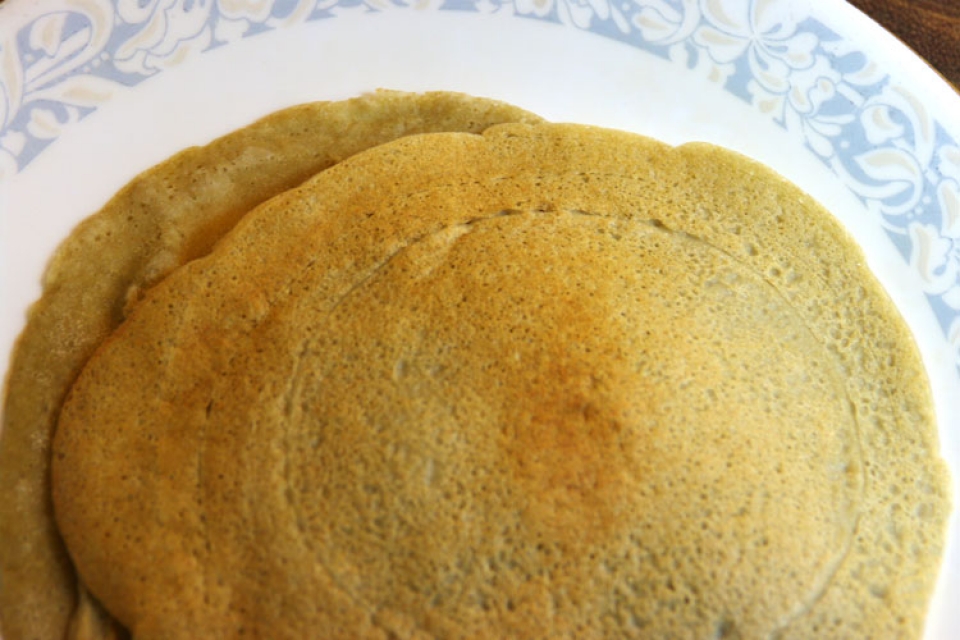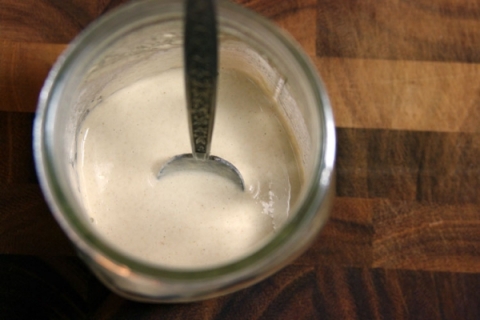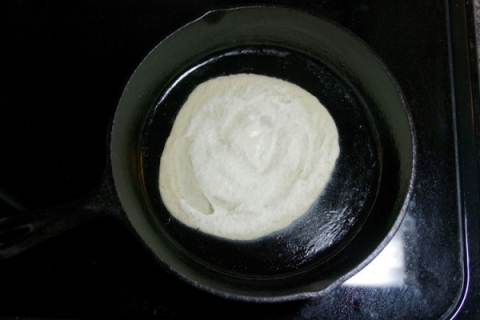How to Make Dosa
Dosa is a thin pancake-like bread made from a fermented batter of, traditionally, rice and lentils. It is commonly found served along South Indian dishes, however, since it’s gluten-free, it makes a great substitute for wraps or crepes as well. It can also be made with other types of legumes, such as red lentils, split peas, and chickpeas, and you can use either white or brown rice.
To make the batter, first you need to let your rice and beans soak overnight. The ratio is 1:2 legumes to rice. A half cup legumes and one cup rice will make about 1 quart of fermented batter. To soak, add your legumes and rice to a quart mason jar and fill the jar with filtered water. Cover the jar and let soak at least 8 hours.
Rinse the rice and beans and then put the mix in a food processor along with water. Start with a small amount of water (about ½ a cup) and add water as you process the mixture. Process and add water until your batter is about the consistency of ranch dressing or a little thinner. The batter should feel fairly smooth to the touch, not gritty.
Fermented dosa batter
Pour the mixture into a mason jar, leaving about a 1-inch or so headspace. Cover with a towel and let ferment overnight (at least 8 hours). The fermentation process is said to increase the vitamin B and vitamin C content, and it seems to be essential for binding the batter together in the absence of gluten. After the second ferment, you can either use the batter right away, or save in the refrigerator up to a week. If moving to the fridge, cover the jar with a screw-on lid.
To make the dosa, heat a cast iron over high heat. You’ll want to get the pan fairly hot and then you can turn the heat down to medium-high heat. Lightly coat the pan with a high heat oil like sunflower oil using a paper towel to distribute the oil. Pour about 1/3 – ½ cup of the batter into the pan to form a circle and then using the back of a small ladle and moving in a circular motion, spread the batter into a thin layer. At this stage, you could add a dash of salt on top of the wet batter, if desired.
Cooking dosa
The dough may pull up or tear as you move the ladle over it. If this happens it means the pan isn’t hot enough or there is too much oil in the pan. Once you’ve smoothed out the batter in the pan, watch the dosa and when the edges start to curl up off the pan, gently flip it to the other side to cook through.
You can serve dosa in a number of different ways. You can serve it as a wrap stuffed with seasoned veggies, or with chutney or a thick dip. You can also use it as a substitute for bread or pancakes and eat it with peanut butter, jam, or butter. As always, feel free to experiment, and if you find a delicious combination, let us know!


